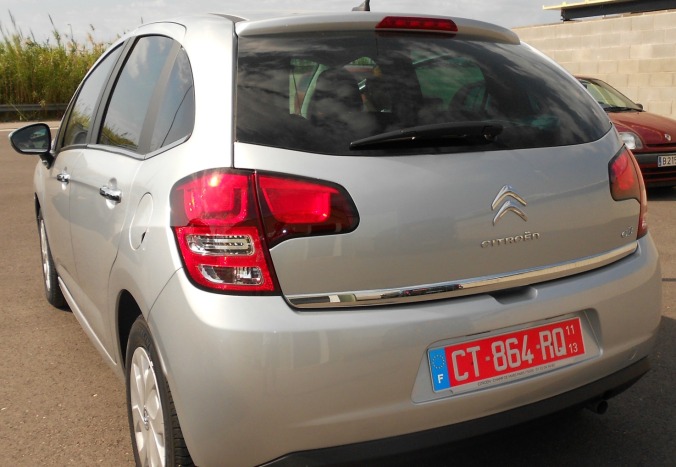“Have you been to the University?” asked our Greeter, Dino as he led us out of the San Bernadino alle Ossa church in Milan after having a look inside its unique side chapel filled with human bones. We had never visited the church despite it being just a short distance from our accommodation in central Milan, where we have stayed on past visits.
The answer to Dino’s question was “No”, even though like the church the University of Milan is only a short walk from the centre of Milan.
We’ve been fortunate to stay in many university towns during our travels albeit during the summer when many students have vacated the towns over the summer holiday period.
Universities in our home country are young so there is a sense of awe in visiting towns to be surrounded by jaw dropping architecture and to tread along streets where scholars have stridden for hundreds of year.
Some of our favourites (in no particular order):
Oxford University, Oxfordshire, England
We were fortunate to have one of our tribe live in this beautiful English city for a time so we had the opportunity to see more of the city than we had on a past day trip when we joined a short walking tour which led us around the more popular colleges. A longer stay gave us the time to appreciate the history and the stately architecture of the some 38 colleges which make up the University. All were within walking distance of our accommodation. We were able to spend a full afternoon at the Oxford University Museum of Natural History, and amble along the canals of watching the boats move through the lock systems. We watched rowers go through their paces while punters cruised lazily along the river. We took day trips around the surroundings through picturesque villages and countryside. Oxford is worthy of more than a day trip from London.

Cambridge University, Cambridge, England
We drove to Cambridge on a day visit. While similar to Oxford (it was established by some Oxford rebels), the University precinct seems smaller and easy to manage on a daytrip. We traversed through some of the quieter back streets, and came out to the lively Kings Parade to Kings College, stopped to watch chocolatiers prepare fresh delectable and summer picnickers sitting on the banks of the River Cam while others took a relaxed punt. We noticed a notably more casual air about the city.

La Sorbonne, Paris, France
Pascal, our Paris Greeter, showed us around his city for an afternoon. Knowing that we would re-visit many of the city’s popular attractions on our own, Pascal concentrated on showing us parts of his city he knew we would not find on our own. He opened gates and doorways into sanctuaries we would never have found around the Left Bank including La Sorbonne, one of the oldest and famous universities in the world. The serene courtyard of Les Ecoles, was one such sanctuary. Les Ecoles is a hostel for female university students inspired by the Spanish Saint Josemaria Escriva, the founder of Opus Dei movement.

University of Milan, Italy
The University of Milan boasts teaching facilities in buildings of historical significance in central Milan. Dino ushered us into the entrance of the former Palazzo dating back to the 15th century.
We were greeted by a beautiful courtyard filled with a luscious green lawn surrounded by a covered arcade around the perimeter. Similar but smaller courtyards branched off from the left and right. Two of these hold further historical significance. Each has an archaeological site displaying ancient Roman ruins. The first is relatively intact, displaying the remains of the Roman version of a refrigerator, and the second, the remains of a large kitchen.
The main building of the University known as “La Cá Granda” (the Big House) was used as a hospital for the poor until after the Second World War when it was handed over to the University. The Law and Humanities Library is now housed in one of the largest old hospital wards. Wander in and imagine it full of hospital beds.

Brera Academy of Fine Arts, Milan, Italy
Located on the site of a former monastery, the Academy in Palazzo Brera shares its location with the Pinacoteca di Brera, the main gallery for paintings in Milan, the Astronomical Observatory and Botanica Gardens located behind the Palazzo. There is plenty to fill your afternoon here before you dine at one of the many restaurants in the area.
Start your visit in the courtyard where you’ll find a replica of the nude bronze sculpture of the great French rule, Napoleon. Take a wander along the corridors and into the galleries. You may be treated to some more modern art pieces if students were showing their art portfolios at the time. The piece de resistance for us was walking up the grand staircase and stepping inside the Great Library, one of Europe’s oldest libraries with its wood-panelled reading room and books dating back to the 1600’s lining in glass bookshelves.

University of Vienna, Vienna, Austria
Known for its music and culture, the University, founded in 1365, the third oldest university in central Europe. While the University is spread out in buildings throughout the city, the main building at the “New University” on the Ringstrasse (the “Old University” is located near the Jesuit Church) is worthy of entering. The building hosts domed entrances, elegant staircases and beautiful hallways, a shaded courtyard where summer students gather. At the entrance there is a display of photographs of the 20 Nobel prize winners who studied at the University.
The Old University is not generally open to the public but you will be able to take a look at the exterior of the building and if you get to have a look inside, head to the main hall to see the frescoes. It won’t be a wasted visit, there is plenty to see around the area. Look out for an upcoming post dedicated to our visit to Vienna.

University of Southern California, Los Angeles, USA
The primary purpose of our visit to USC was to visit a family member who works there. We met her at her office space in a building just off campus which gave us the perfect chance to enjoy seeing more than the University buildings. Instead, as we walked toward the main University buildings to have lunch, we walked through the streets of sorority and fraternity houses, some with students enjoying the summer afternoon outdoors throwing a ball around.
The University was founded in 1880 and is the oldest private research university in California. A recent renewal of the University campus has introduced beautifully gardened quadrangles and open areas intermingled with the old and new red brick buildings designed to reflect Romanesque architecture.





